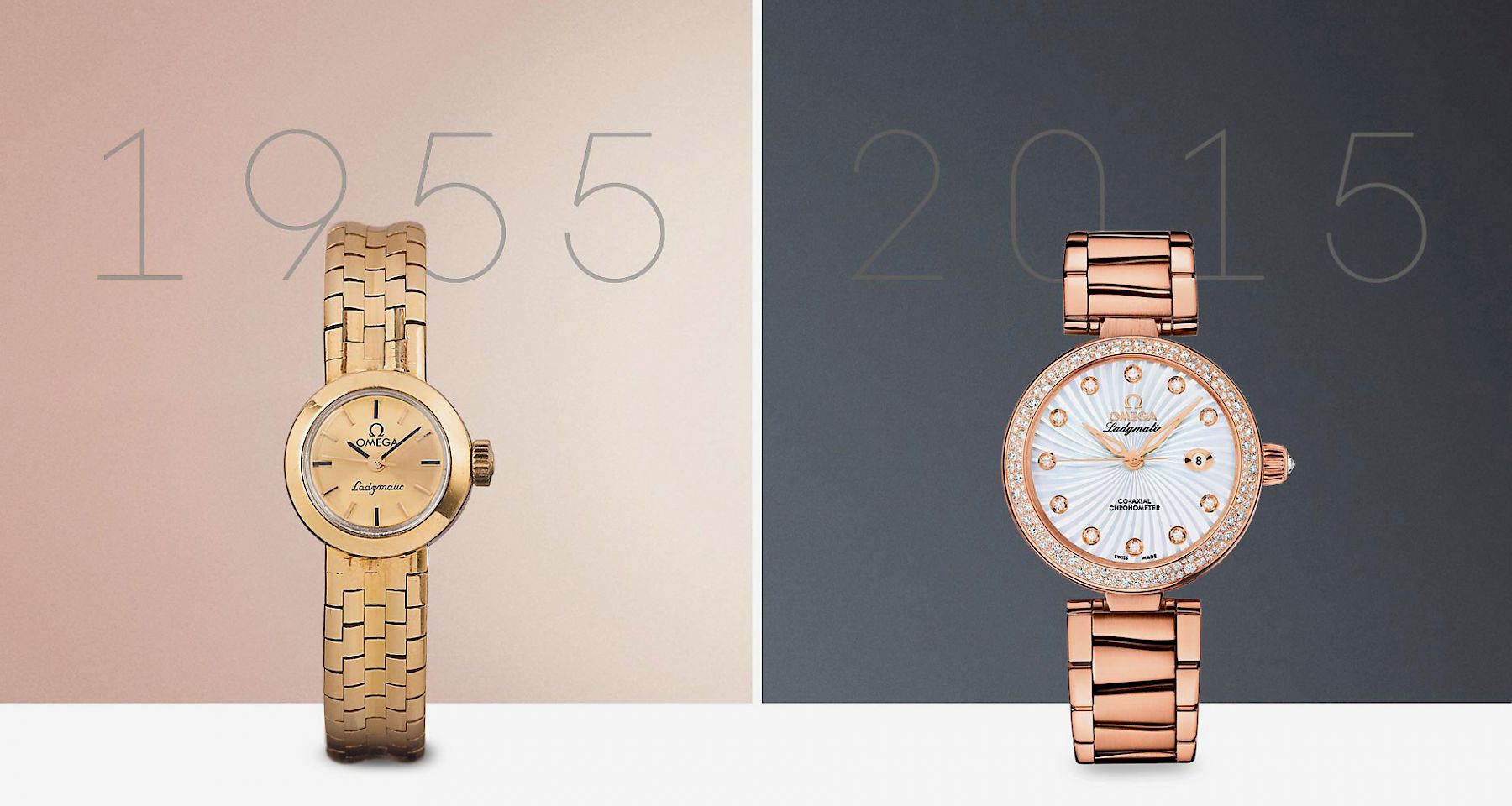Omega have a long tradition of making excellent ladies’ watches; something which their recent “Her Time” exhibition in Milan showcased marvellously. The exhibition at La Triennale di Milano, the city’s leading design museum, displayed 60 watches from Omega’s collection, creating a century-long timeline of the ladies’ watch from early Lépine pendants to the iconic Ladymatic and right up to the present day.
Early watches like hers, however, were not worn to tell the time; they could be inaccurate by up to several hours, and were effectively novel jewellery for the nobility. It would not be until the mid-17th century that the introduction of the balance spring would bring this margin of error down to a more practical ten minutes.
Still, the watch remained a popular accessory. For many years, the idea of the wristwatch was a peculiarity; originally, most watches were worn as pendants. Whilst the ladies’ watch remained so, the introduction of the gentleman’s waistcoat encouraged a new design; with smooth edges and a flattened shape to fit snugly into the pocket, the pocket watch became the predominant style.

Despite the existence of Elizabeth I’s watch, it’s often popularly stated that Caroline Murat, the Queen of Naples, had the first true wristwatch; designed in 1810 by Abraham-Louis Breguet, this was a thin, oval repeater watch set on a wristlet of hair and gold thread, which popularised the wristwatch amongst noble ladies.
Despite the improvements to accuracy available, these watches were still not particularly designed to tell the time; ladies were not expected to need to know the time to any particular extent. Far more attention was paid to the jewellery and ornamentation of the ladies’ timepiece than to its accuracy or reliability. Even in the 1930’s, as fashion blogger Garance Doré notes in an article for Omega, it was considered improper for a woman to check the time on her watch; they had to be designed for fashion first. Their faces were frequently miniscule by modern standards, to enable their concealment in fashionable bracelets.
Omega’s original Ladymatic watch, launched in 1955, was something of an exception; it was the first ladies’ timepiece in their collection to be tested to chronometer standards, showing a new respect for the ladies’ watch.

Because of their practicality, wristwatches finally gained traction amongst gentlemen from the 1930s onwards. For ladies, this may have been seen as either a blessing or a curse; as watch manufacturers focussed on the male market, many ladies’ models were created by simply making the gents’ watch smaller (and perhaps adding a more feminine colour and some diamonds), which made them rather more practical, but perhaps lost a little in their design.
It is, therefore, those ranges that are expressly designed for the ladies’ wrist which are often the most popular; combining the craftsmanship and accuracy that the modern woman needs just as much as anybody else with a design to suit. Omega Ladymatic watches are, of course, a prime example.
If you’re looking for the perfect ladies’ watch, at Banks Lyon we offer an extensive range of exquisite feminine timepieces; whether you’re an aficionado of Omega watches or you prefer any other brand, our team will be happy to advise you on the perfect option. For more information, contact us on 01524 384858 or visit our Lancaster store; you can also follow us on Facebook and Twitter for updates.
{star-snippet}
